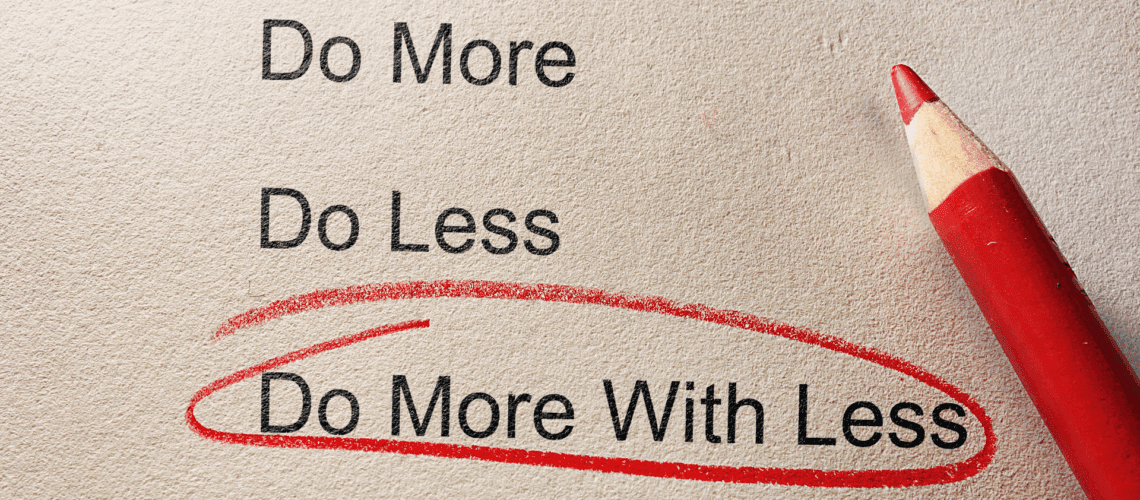Achieving more whilst doing less has become a central challenge for leaders across British organisations. Recent research indicates that only 21% of global employees were engaged at work in 2024, with Gallup estimating £438 billion in lost productivity globally due to low engagement. For leaders navigating hybrid working environments, the question isn’t simply about working harder – it’s about working smarter through strategic leadership productivity approaches.
The shift towards hybrid working has created new opportunities for leadership efficiency. Whilst the daily commute has reduced for many teams, this time hasn’t automatically translated into better work-life balance or increased productivity. Instead, many leaders find themselves working longer hours rather than utilising this time for strategic thinking or personal development.
This raises a fundamental question: how can leaders develop genuine leadership productivity without falling into the trap of simply doing more?
Understanding the Connection Between Energy and Leadership Productivity
Leadership productivity extends far beyond traditional time management. It encompasses the strategic management of both physical and mental energy to drive organisational results. When leaders operate with depleted energy reserves, the entire organisation suffers through reduced decision-making quality, poor communication, and decreased team engagement.
Research consistently demonstrates that sustainable leadership productivity requires a holistic approach to energy management. Leaders who maintain high energy levels consistently outperform those who rely solely on willpower or extended working hours.
The Hidden Energy Drains in Leadership
Several factors commonly deplete leadership energy without delivering proportional results:
Misaligned Role Responsibilities: Leaders who find themselves in positions that don’t match their strengths or interests will struggle with energy depletion regardless of external productivity strategies.
Administrative Busy Work: Tasks that feel important but don’t contribute to strategic outcomes drain energy whilst providing little satisfaction or measurable impact.
Constant Context Switching: The human brain operates most efficiently when focusing on single tasks. Leaders who constantly switch between different types of work experience cognitive fatigue that reduces overall effectiveness.
An honest assessment question for leaders: Do you genuinely enjoy your current role and responsibilities? If the answer reveals significant misalignment, no amount of productivity techniques will compensate for fundamental role dissatisfaction.
Strategic Delegation for Leadership Productivity
Effective delegation represents one of the most underutilised strategies for improving leadership productivity. Many leaders continue performing tasks that team members could handle competently, often due to perfectionism or misguided beliefs about delegation timing.
The Delegation Opportunity Audit
Leaders should regularly assess their activities using this framework:
Tasks Only I Can Do: Strategic decisions, external stakeholder relationships, team development conversations, and organisational vision setting.
Tasks Others Can Do Better: Detailed project execution, specialist technical work, routine administrative processes, and data analysis.
Tasks That Develop Others: Project leadership opportunities, client presentations, problem-solving challenges, and cross-functional collaboration.
The most productive leaders focus the majority of their time on the first category whilst systematically moving items from categories two and three to appropriate team members.
Overcoming Delegation Resistance
Common delegation barriers include concerns about quality standards, training time investment, and loss of control. However, research demonstrates that leaders who delegate effectively create more engaged teams whilst freeing themselves for higher-value strategic work. This creates a positive cycle where productive leadership enables further delegation opportunities.
Eliminating Productivity-Killing Busy Work
Not all leadership activities contribute equally to organisational success. The most productive leaders ruthlessly eliminate or delegate tasks that create the illusion of productivity without delivering meaningful results.
Identifying Non-Essential Activities
Communication Overload: Excessive email checking, attending meetings without clear purposes, and responding to every notification immediately.
Administrative Tasks: Detailed reporting that others could prepare, routine data entry, and process management that could be systematised.
Low-Impact Decision Making: Micro-decisions that team members could handle independently with proper guidelines and authority.
The Strategic “No” Framework
Productive leaders develop sophisticated decision-making frameworks for declining requests that don’t align with strategic priorities. This isn’t about being unhelpful – it’s about maintaining focus on activities that create the greatest organisational value.
Time Management Strategies That Actually Work
Traditional time management advice often fails because it doesn’t account for the unpredictable nature of leadership responsibilities. However, certain principles consistently improve leadership productivity when applied thoughtfully.
Parkinson’s Law in Leadership Context
Parkinson’s Law states that “work expands to fill the time available for its completion.” This principle has profound implications for leadership productivity. When leaders allocate specific time boundaries for tasks, they often discover they can achieve the same quality results in significantly less time.
Practical Application: Rather than allowing meetings to default to 60 minutes, experiment with 45-minute slots. Instead of allowing project reviews to expand indefinitely, set clear time boundaries and stick to them.
The Power of Focused Work Blocks
The most productive leaders protect substantial blocks of uninterrupted time for their most important work. This might mean:
Communication Boundaries: Specific times for email and message responses rather than constant availability.
Meeting-Free Zones: Designated periods when the calendar remains completely clear for strategic thinking.
Deep Work Protection: Environments free from notifications, interruptions, and immediate demands.
Results-Oriented Leadership Focus
Leadership productivity ultimately depends on focusing energy and attention on activities that drive measurable organisational results. This requires clear understanding of what constitutes high-impact leadership work versus busy work disguised as productivity.
The 80/20 Analysis for Leaders
Applying Pareto’s Principle to leadership responsibilities reveals that approximately 20% of leadership activities typically generate 80% of organisational impact. The challenge lies in identifying and protecting this critical 20%.
Strategic Activities: Long-term planning, team development, stakeholder relationship building, and organisational culture development.
Operational Excellence: System improvement, process optimisation, and capability building that enables team autonomy.
External Focus: Market analysis, competitive positioning, and external partnership development.
Regular Activity Auditing
Productive leaders regularly analyse how they spend their time, categorising activities by impact level. This analysis often reveals surprising patterns – such as excessive time spent on low-impact activities or insufficient time devoted to strategic planning.
The goal isn’t to eliminate all low-impact activities immediately, but to gradually shift the balance towards higher-value leadership work whilst ensuring operational requirements remain met.
Creating Sustainable Leadership Productivity
Sustainable leadership productivity requires systems that support consistent high performance without relying solely on personal willpower or energy reserves. This includes developing team capabilities, implementing effective processes, and maintaining personal energy levels.
Building Team Capabilities
The most productive leaders invest heavily in developing their team’s capabilities, creating a multiplier effect that increases overall organisational productivity. When team members can handle increasingly complex responsibilities independently, leaders can focus on truly strategic work.
Energy Management Strategies
Physical and mental energy management forms the foundation of sustainable leadership productivity. This includes regular exercise, adequate sleep, stress management, and maintaining interests outside work that provide genuine restoration.
Systems Thinking Approach
Rather than relying on individual productivity tactics, effective leaders develop organisational systems that make productivity the natural outcome. This might include streamlined decision-making processes, clear authority levels, and communication protocols that reduce unnecessary interruptions.

Frequently Asked Questions About Leadership Productivity
Start with the smallest possible changes that deliver immediate impact. Begin by conducting a one-week activity audit to identify the most obvious time drains. Many leaders discover they can immediately eliminate 2-3 hours of low-value activities weekly. Use this recovered time to implement one new productivity strategy at a time, allowing each to become habitual before adding the next.
Team development represents an investment in future leadership productivity. Begin by identifying team members who show potential for taking on additional responsibilities, then provide structured opportunities for growth. Consider whether some tasks could be eliminated entirely rather than delegated. Additionally, examine whether external resources or process improvements could address capacity limitations more effectively than continuing to handle everything personally.
Build buffer time into weekly schedules specifically for unexpected demands. Reserve 15-20% of your calendar for unplanned activities rather than scheduling every moment. Develop clear criteria for what constitutes a genuine emergency versus what feels urgent but isn’t truly critical. Create standard operating procedures for common “urgent” situations so they can be handled efficiently without derailing the entire day.
Building Your Leadership Productivity Foundation
Leadership productivity isn’t about working longer hours or squeezing more tasks into already packed schedules. It’s about making strategic choices about where to focus energy and attention for maximum organisational impact.
The most effective leaders recognise that sustainable productivity comes from developing systems, building team capabilities, and maintaining the personal energy necessary for high-quality decision making. By eliminating low-value activities, delegating effectively, and focusing on truly strategic work, leaders can achieve significantly more whilst actually working less.
The key lies in consistency – implementing these strategies systematically rather than sporadically. Small, consistent improvements in leadership productivity compound over time, creating substantial differences in both personal effectiveness and organisational results.

